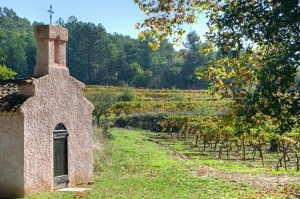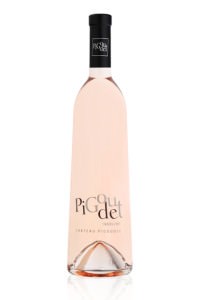Pink in Provence
The France Diaries
If it is summer in Provence, it must be rosé. And a lovely summer in Provence like the one just past was just made for drinking rosés. And so we did. Our lunchtime wine was most often a glass of local rosé, and it was just perfect with the Provençal food and weather.
But besides being light, fresh and delightful to drink, rosés in Provence are now big business. Nowhere was this fact more apparent than during my visit to Château Pigoudet at Rians, one of the northernmost estates in the AOC Coteaux d’ Aix-en-Provence. A very pretty, very old 16th century estate, all in pink right down to its wines, it has moved on from a time when most of the wines they made were red, to the present, where 85% of the wine they make is rosé. And 46% of their wine is exported, mainly to the US, Germany and the UK. They make 250,000 bottles of all their wines.
It was a day away from harvest, late this year in Provence as elsewhere. But here in Pigoudet, the sun is shining brightly, and the winemaker is smiling. Not that it was all smiles right through, they lost almost 40% of their grapes in the hailstorms of July 17, which did damage to some vineyards in Provence. Nonetheless, the smiles are now back. This is a harvest they are looking forward to. And there will be no red wines made this year.
Aurélien Pont, who heads a small, dedicated team at Chateau Pigoudet, is a young man, born and brought up in Aix-en-Provence. Pont started his career with Château Pigoudet, which is now owned by a German family, the Schmidts. “Our focus is now on making quality rosé wines,” he says. The rosés too, have changed in character, from the deeper orangey-peach wines they once were, to a more modern avatar – pale pink, so light and fragrant that they seems a whisper of their former style. But it takes just one sip to realise that the light hand has not translated into any loss of flavour.
Pont explains. “Earlier rosés were heavier, darker, with more tannins, a by-product of red wines. Now we make our rosés for themselves, and the balance between sugar and acidity is perfect. We have very short skin contact, sometimes just 10 minutes in the press. We lose some wine, but what we get is a much superior quality.” (more…)





